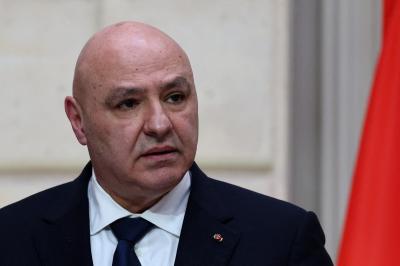It is likely that the member countries of BRICS will not reach an agreement to adopt a new currency, or even an existing currency among their members.
In the heart of Johannesburg, South Africa, the 15th BRICS summit unfolded, gathering powerhouse emerging nations under the banner "BRICS and Africa: A Partnership for Sustainable Growth, Balanced Expansion." The event, spanning the 21st and 22nd of the month, was chaired by South Africa's leader, Cyril Ramaphosa. Key players like China's Xi Jinping, Brazil's Luiz Inácio Lula da Silva, and India's Narendra Modi were in attendance. Russian President Vladimir Putin chimed in virtually from Moscow, with Foreign Minister Sergey Lavrov representing Russia on the ground.
Set against the backdrop of mounting global and internal challenges, the meeting focused on two primary agendas:
The potential expansion of the group by welcoming new member nations.
The ambitious proposal of adopting a unified currency among the member nations.
These aspects are seen as pivotal for the future of this partnership, which currently brings together Russia, India, Brazil, China, and South Africa — with the latter touted as one of the fastest-growing economies worldwide. The summit aimed to legitimize the alliance as a budding global economic force, especially in the face of declining Western economic influence. Yet, tangible progress on these fronts remains scant.
Speculations are rife that BRICS may falter if unity among its members is not achieved, especially concerning consensus on political and economic issues. The dynamics between China and India often dominate these concerns.
From Inception to the Future: A Brief Overview
In 2001, world-renowned economist Jim O'Neill coined the term "BRIC", then excluding South Africa. He boldly predicted that this collective would eventually overshadow the Western economy. At the time, these four nations hadn't yet formalized their collaboration.
Russia hosted the inaugural BRIC summit in 2009, suggesting that the 2008 global financial crisis highlighted the urgency for major emerging economies to band together, pushing back against Western economic dominance. Notably, Russia, in the same year, was also intervening in Georgia, keen to reassert its influence over former Soviet republics and aiming to foster growth in its Asian allies and beyond.
Amidst a global economic slowdown, China was eager to reduce its dependence on Western markets, especially the US dollar. The BRIC bloc thus emerged as a space for diversifying and strengthening their industrial and trade infrastructures.
Spotting potential in Africa, especially as a means to broaden engagements beyond the West, China and Russia extended an invite to South Africa in 2010, thus giving birth to the BRICS coalition, spanning a quarter of the world's emerging areas. For Russia, this group evolved into a platform that challenges Western hegemony, both politically and economically.
BRICS Mulls Over Common Currency and Expansion
Amid shifting global power dynamics, BRICS, the conglomerate of emerging economies, is once again making headlines. The group, which encompasses Brazil, Russia, India, China, and South Africa, is facing internal deliberations on two significant fronts - the adoption of a shared currency and potential expansion by integrating more countries into their fold.
The Rise of a Potential Common Currency
China, over time, has taken significant strides in strengthening its monetary strategy. In 2015, the Asian giant championed the creation of two pivotal economic entities within the BRICS framework:
The New Development Bank
The BRICS Contingent Reserve Arrangement
Both institutions were touted as potential alternatives to the International Monetary Fund and the World Bank. Additionally, in the same year, the "Cross-Border Interbank Payment System" was launched, anchored on the Chinese yuan. This move was strategically designed to diminish the dominance of the US dollar and elevate the yuan's global standing. (To put things in perspective, one yuan currently equates to 0.14 US dollar.)
Bilateral trade between Russia and China surged in 2022, prompting both powerhouses to strategize about moving away from dollar dependence. Russia, while expanding its yuan-based financial offerings, was simultaneously working on alternate trade systems, with China becoming a crucial ally in this pursuit. This pivot toward the yuan and thoughts of a new shared currency for BRICS comes on the heels of global economic tensions, fueled by Russia's invasion of Ukraine and the subsequent Western sanctions on Moscow.
However, it's imperative to underline that Russia's lesser reliance on the dollar wasn't a mere preference over the yuan. The move was more of a consequence of Washington's strategies, limiting dollar accessibility in Russian markets. A full-fledged "de-dollarization" in Russia seems plausible only if BRICS members converge on the idea of a shared currency, akin to Europe's euro. But adopting a new currency isn't as simple as rolling out new notes; it mandates genuine economic integration. Given the disparities among BRICS nations, this endeavor promises to be challenging.
While a shared currency's prospects might be the talk of the town, achieving consensus, especially given China-India divergences and India's strengthening ties with the US, seems like a distant dream.
BRICS on the Horizon of Expansion
The potential enlargement of BRICS stands at the forefront of its current deliberations. Since 2017, there have been active discussions surrounding the creation of what's now popularly termed "BRICS+". Last year, during its summit, China mooted the idea of such an expansion. Recent reports from the ongoing South Africa meeting highlighted that 23 nations have formally expressed their interest in joining BRICS, with 40 others informally showing inclination. The numbers are impressive, and with the backdrop of the ongoing Ukrainian crisis, both Russia and China appear more inclined towards expansion.
However, official membership inclusion remains mired in complexity due to the absence of formalized procedures. South Africa's entry in 2010 was more of an invitation from the existing members. This scenario underscores the division and varied strategic interests among BRICS nations, primarily between Beijing and New Delhi.
During the summit, the president of South Africa announced the inclusion of six new countries to the group: Iran, Saudi Arabia, the United Arab Emirates, Egypt, Argentina, and Ethiopia. These countries will join the BRICS starting from January 1st, 2024. It's worth noting that the BRICS countries account for 23% of the global Gross Domestic Product and more than a third of the world's population.
Lastly, while the economic gravitas of BRICS is undeniable and the allure of a Moscow-Beijing alliance is strong, experts remain skeptical about the feasibility of a shared BRICS currency or an EU-like financial system. Will BRICS sustain its cohesion in the face of global shifts, or will it evolve into an integrated market with a common currency, possibly at the cost of sidelining some members with divergent objectives? Only time will provide clarity in this constantly evolving geopolitical landscape.
 French
French















